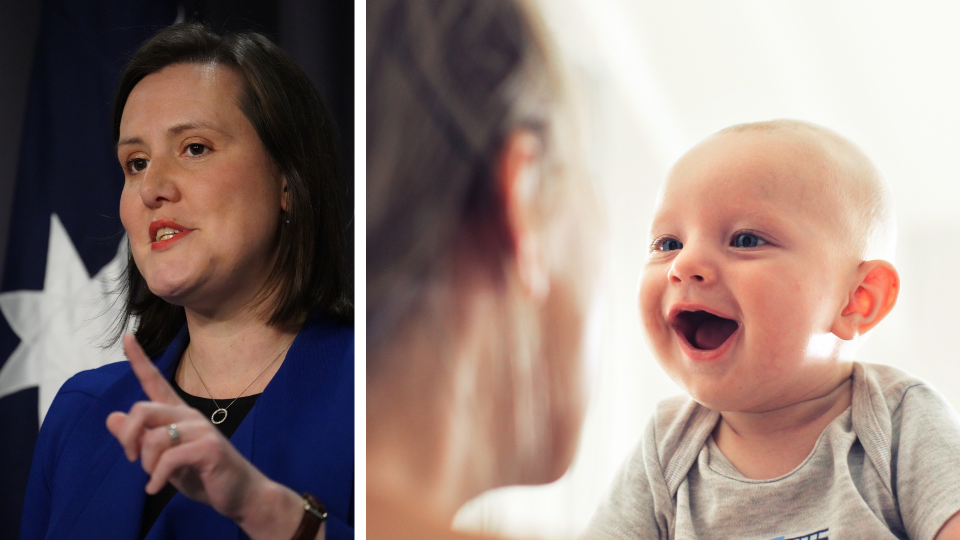Paid parental leave just got a lot more flexible

Australian parents will have greater access and more flexibility around their paid parental leave under a new scheme announced by the Minister for Women, Kelly O’Dwyer.
Parents having a child will be able to take their paid parental leave in blocks when they choose.
Also read: Westpac grants staff transgender leave
“It will mean more flexibility,” O’Dwyer told the Today Show.
“The current system is far too rigid and thousands of parents miss out on their parental leave payment. But what this will do is allow parents to be able to take blocks of leave and receive their parental leave payment.
“It will allow them to do that in a time that suits them and their family arrangements, recognising that there are many women out there who are self-employed, who are small business owners, and there a lots of dads who want to be there during the very early years.”
Also read: Forget a pay-rise, Aussies want a praise-rise
Parents will be required to take an initial minimum 12 weeks, but the remaining six weeks can be claimed any time within two years after the child’s birth or adoption. As it stands, parents are required to take the 18 weeks in one block.
The work test for the Paid Parental Leave system will also be amended to extend access. As it stands, parents need to have worked at least 330 hours in 10 of the 13 months prior to the birth of their child, and can have had a break of no more than eight weeks.
However, under the new system, parents will qualify even if they’ve had a break of up to 12 months.
The changes were announced as part of O’Dwyer’s inaugural Women’s Economic Security Statement, which included a suite of measures designed to promote women’s financial and physical security, earning potential and economic independence.
Also read: 7 tips for talking to your partner about money
The Minister said these measures will be funded by a $109 million package over four years.
Helping women leave abusive and violent relationships
One of the biggest barriers to escaping a violent relationship is often money.
The government has pledged $14.9 million to Good Shepherd Microfinance, which will provide no-interest loans to women leaving domestic violence.
“It will help 45,000 of them to be able to flee those relationships and be able to set up and establish a new home. Currently it’s very difficult for women to get access to enough money to be able to have a bond. This will allow for that and it will be life-changing,” O’Dwyer said.
Women will also have access to a specialist loan caseworker to help them build long-term financial confidence.
Also read: Scott Morrison plans to cut immigration amid population concerns
Women will also be able to dip into their superannuation savings earlier to help them flee an abusive relationship.
The suite of measures also includes amending the treatment of superannuation assets in family law proceedings, in an attempt to stop partners from hiding information about assets during separation proceedings.
Additionally, the government will put more funding into domestic violence and financial support services, and fund legal assistance to prevent those affected by family violence from a direct cross-examination by their perpetrators in family law situations.
Helping women earn more
“In October 2018, the women’s participation rate was 60.5 per cent; and the gender pay gap is moving in the right direction, down to a record low of 14.5 per cent,” O’Dwyer said.
“But despite this progress, some problems still persist. Women are likely to earn less than men; they are likely to work part-time at over twice the rate of men; and at retirement age there is a 42 per cent gap in their superannuation balances.”
The government will reinstate the Time Use Survey, which is used to measure women’s unpaid work and is generally considered the best way to measure how unpaid work is divided.
Also read: 30 celebs who tried — and failed — to start their own businesses
The Workplace Gender Equality Agency will receive an extra $8 million to boost its reporting and data system to improve its measurement of the Australian gender pay gap.
Just last week, the agency found men earn more than women across all sectors.
That’s part of the $54.8 million dedicated to increasing women’s workforce participation. Another $18.6 million will be put into entrepreneurship programs to improve women’s earning potential, with the remaining $35.6 million going towards women’s overall economic independence.

 Yahoo Finance
Yahoo Finance 
